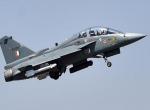Drone strikes, as a part of targeted killing campaigns against jihadist militants in various parts of the world (Pakistan, Afghanistan, Yemen, Syria, Iraq, Syria and more), have always suffered with one common negative end product, i.e., unintended casualties to non-targeted civilians and non-combatants.
There is a lot of resistance world over on the loss of innocent civilian lives over the drone phenomenon. 'Reprieve', an organisation of front line lawyers and investigators in the US and working for people worldwide suffering from extreme human rights abuses at the hands of powerful governments has assessed that for every intended target, an average of 28 innocent (unknown) lives are being sniffed out in drone strikes1. In their 2017 Report titled 'Drones and Assassination', Reprieve has claimed that in one case, to take out one 'targeted person' a total of 76 adults and 29 children got killed in failed attempts to get to the target2.
Why Drone Collaterals are Inevitable - A Technical Analysis
This article attempts to analyse the premise: are collateral damages inevitable given the level of technological sophistication that obtains today in the front-line Unarmed Aerial System (UAS). The details are discussed in the succeeding paragraphs.
Considering the basic setting of Ground Control Stations (GCS) with human pilots and a sensor (payload) operators controlling a UAS remotely for detection, tracking and firing on the intended targets, factors that can cause inaccuracies in the so called 'precision' could be many. Limitations in operator training, delays and inaccuracies in the communications or satellite link between the GCS and UAV, limits of accuracies in the sensors on board the UAS to take an accurate target fix, and finally, technical limitations of the weapons being fired from the UAS. The analysis is focused on each of these factors, less the factor of operator training which is intangible. As a reference, Predator/Reaper class of UAS are considered to drive home the larger issue.
As to communication, data linkages and connectivity’s, normally the entire network is built over High/Very High/Ultra High Frequency (HF/VHF/UHF over voice/data) cellular/landline telephones with hardware connectivity to the satellite communication (SATCOM) terminals. The line of sight (LOS) data link between the GCS and the UAS is based on C Band (4-8 Ghz) while KU Band (11.2-14.5 Ghz) is used for Beyond LOS (BLOS) operations. Sources of inaccuracy begins from here.
The first source of inaccuracy is in what is commanded and what gets inserted in the loop due to an inherent delay between the moving of the joystick by the GCS operator and the UAS receiving the command. In the Reaper UAS, this delay is about 1.2 Seconds as of date3. While it can be contested that once the UAS is on locked track, the few seconds of lag is no issue, the fact that the UAS, given its speed of hundreds of knots (220 knots/390 km/h/108.42 m/s), will be traversing almost to the edge of the human target area in the above time lag, does merit a thought.
The next issue that directly affects accuracy is the capability of the sensors on board the UAS to acquire a target. A typical sensor suit on board a frontline UAS may include visual sensors for targeting, short/mid wave band IR sensors, colour/monochrome daylight TV camera, image intensified TV camera, laser range finder and designator and laser illuminator. Cumulatively, this suit is referred to as Multi-Spectral-Targeting System (MTS). The heart of the MTS in a modern UAS is the Synthetic Aperture Radar (SAR). Much of the accuracy of fire will depend on how accurately the radar is able to distinguish one (target) from the other (implying humans). SAR has a Ground Moving Target Indicator (GMTI) to distinguish between moving and stationery targets and a CCD (Coherent Change Detection) capability to indicate minute changes in two SAR images taken at different times4. Even with the above capability (resolution 0.1 min spotlight mode) on board, the effect on ground invariably does not limit itself to one individual. The reason is that hunter-killer UAS of today are the incarnation of ISR (Intelligence, Surveillance, Reconnaissance) UAS of yesteryears implying thereby, that the hunter-killer (find-fix-finish) role is essentially a retrofit achieved through the weaponisation of the unarmed machines otherwise dedicated for surveillance and reconnaissance.
That brings to notice the type of armaments being fired. The typical arsenal on board the Predator and Reaper UAS are various permutations and combinations of AGM -114 Hellfire Missile, AIM 92 Stinger Missile or AGM -176 Griffin Missile, Brimstone Missile (UK), GBU 12 Paveway II Laser Guided Bombs (LGBs), and GBU 38 Joint Direct attack Munition (JDAM). While AGM 114 Missile is guided by a semi-active laser homing millimeter wave radar seeker, it essentially fires a High Explosive Anti-tank (HEAT) tandem ‘anti-armour’ metal-augmented charge. AIM 92 stinger is a fire-and-forget missile with passive IR focal plane array seeker firing a 3 kg High Explosive (HE) blast fragmentation warhead. The warheads therefore are not perfect for targeting individuals.
Raytheon Griffin is a desired weapon. It is a precision guided munitions (PGM) carrying a relatively small warhead with Laser/GPS/INS guidance on board. The missile is specifically designed for a low collateral damage effect. MBDA (UK) Brimstone is another modern day PGM. Its earlier fire-and-forget version using a millimetric-wave active radar dual-moded with INS autopilot yields an accuracy of sub-1m Circular Error of Probability (CEP). The homing seeker has been adapted to laser guidance providing the firer to pick and choose the target among the frendlies. Its tandem shaped warhead and small blast area reduces collateral damage.
Paveway II is a general purpose Laser-guided bomb. Over a period of time, Raytheon has been able to improve the accuracy of its laser designated guidance bringing down its CEP to a mere 3.6 ft. GBU 38 uses the Boeing standard Mk 82 bomb with JDAM guidance kit converting the dumb to smart munition. While this ‘bolt on’ guidance does improve accuracy, it does has collateral effects.
Thus, important points on the question, 'are drone collaterals inevitable.., are as under:-
• Hunter-killer is not an original but a derived concept from its mother platform, essentially designed for ISR .
• With the MTS, capable of real-time IR, day TV or laser imagery, becoming more and more technologically advanced, it may be possible to point at a ‘needle’ (intended human target). But the weapon system on board can only hit a ‘haystack’ (collateral damage, albeit continuously shrinking).
• Munitions being fired were essentially anti-armour. These are certainly not low-collateral weapons.
• Though PGMs have kicked in, not all engagements are with Griffin/Brimstone type of munitions.
• Hunter-killer is one of the many roles the UAS are being optimised for today. Case in point is the recent development, wherein live feeds from the MTS of the front-line UAS systems are being thought of as accessories to ground/space based sensors to detect incoming ballistic missile threats, especially in Boost/post-boost phase.
In essence, the analysis reveals that collaterals in the UAS missions are a function of the technological limitations of sensors and munitions of date. Collateral damages in UAS operations are likely to continue (albeit on a reduced scale as compared to yesteryears) so long as hunter-killer missions remain a reality of irregular warfare.
The analysis presented is on technical facts. The same does not account for the attitude of 'couldn't care less' by the GCS operator or the tendency to 'let go' with a view to 'take them all' (vehicles in convoy make 'sweet targets'). Unfortunately such attitude is seen to be quite prevalent among the GCS operators. Such intangibles of human attitude and behavior, though well known, do not obviously lend themselves to any techno-analysis.
This question of collateral damage as enumerated above is a huge negative issue bringing into question the claim to precision of surgery in armed UAS/drone operations. Experts feel that in find-fix-finish type of hunter- killer missions using armed UAS, collateral damages create more militants than it eliminates. It is from here that the felt need for a manned and unmanned capability in joint missions arises, where the brute blindness of the UAS is aimed to be combined with the intellect and decision-making capability of a human pilot.
References
1. http://www.reprieve.org.us-drone-strikes.
2. http://www.reprieve.org>drones- drones-and-asssasinations,2017.
3. http;//www.airforce-technology.co.>projects-reaper.
4. http://www.sandia.gov>radar>files>spie>lynx.
(Views expressed are of the author and do not necessarily reflect the views of the VIF)
Image Source: https://www.pakistankakhudahafiz.com/three-terrorists-killed-suspected-us-drone-strike-near-pak-afghan-border/








Post new comment